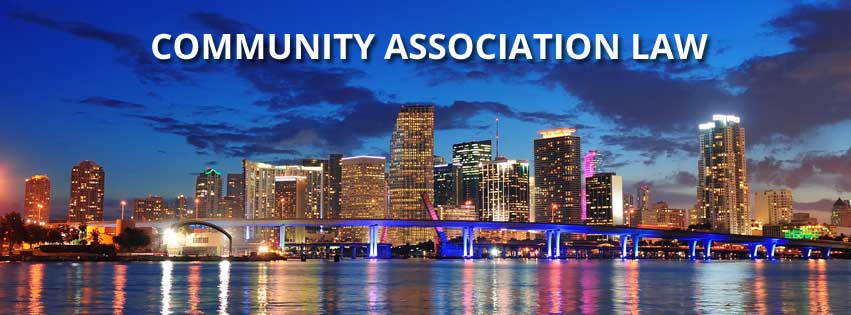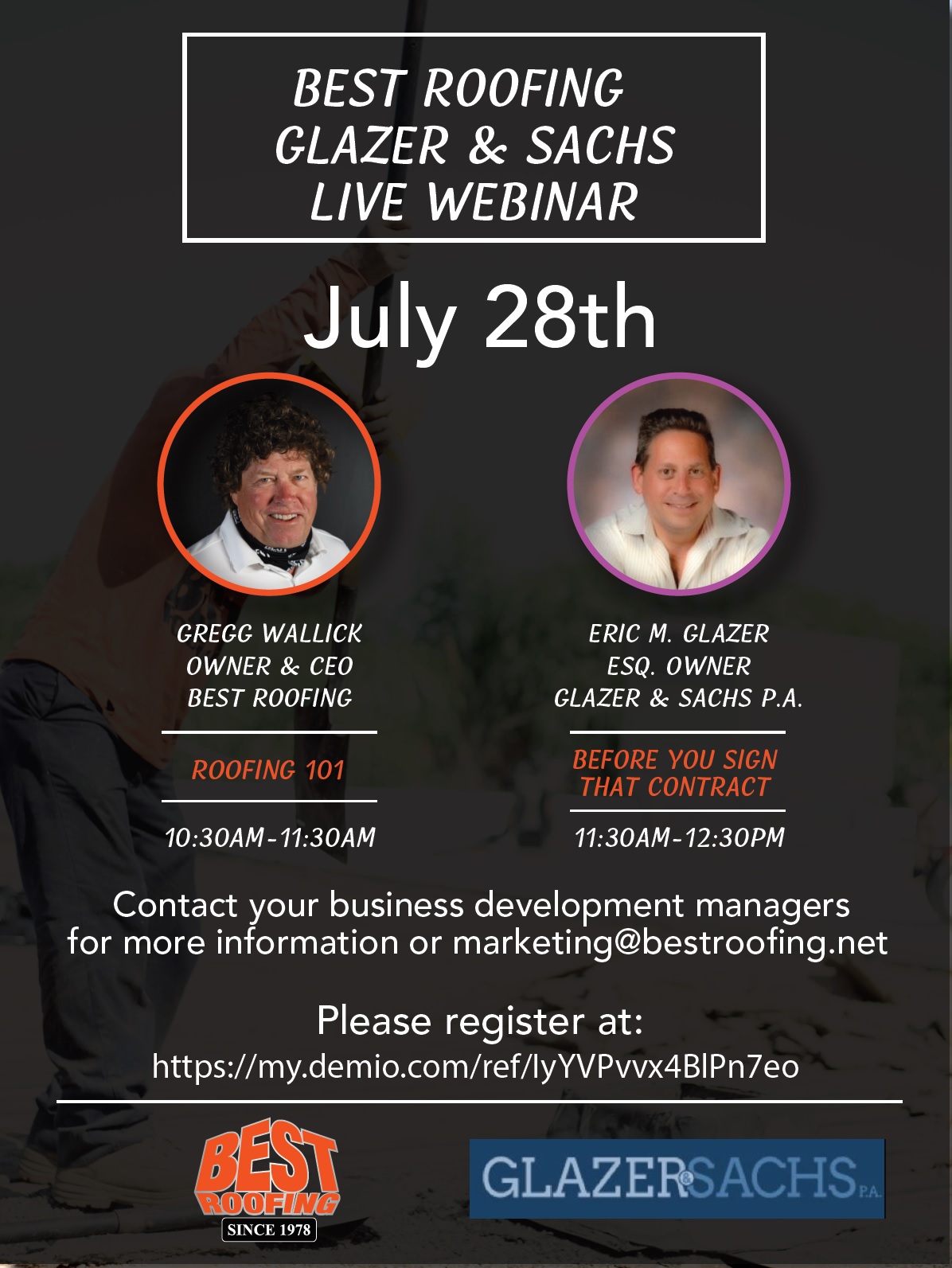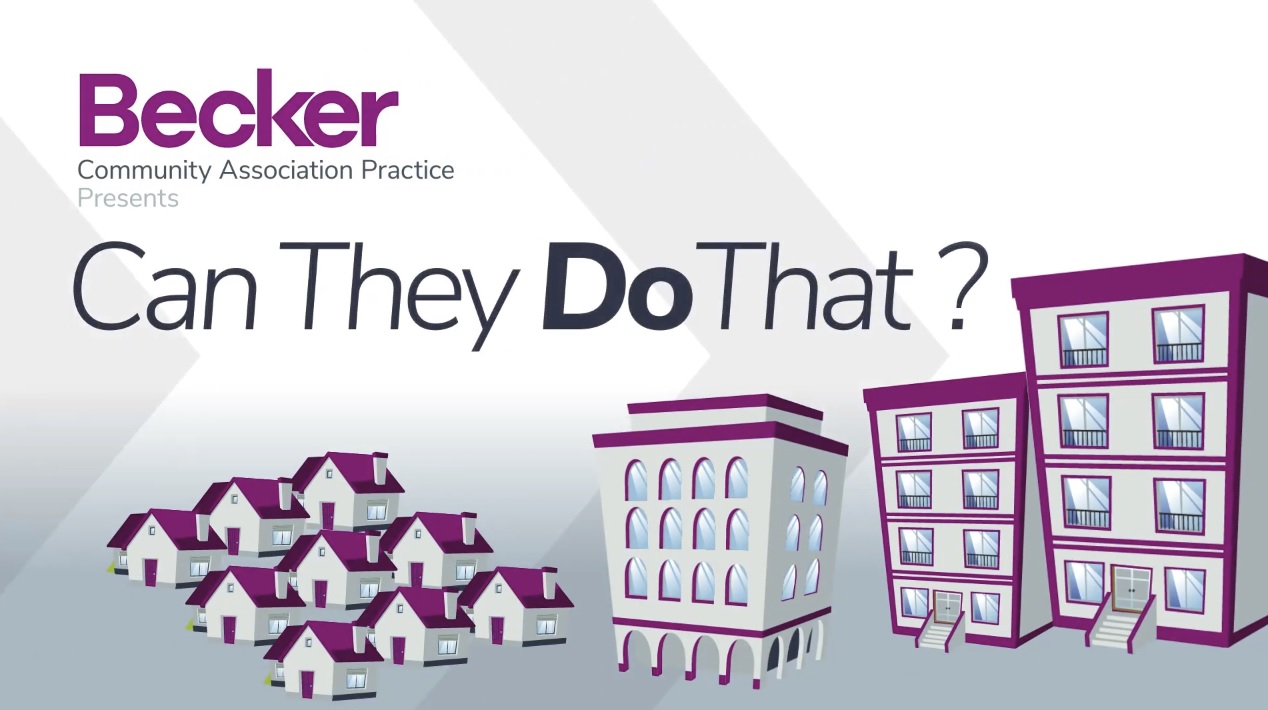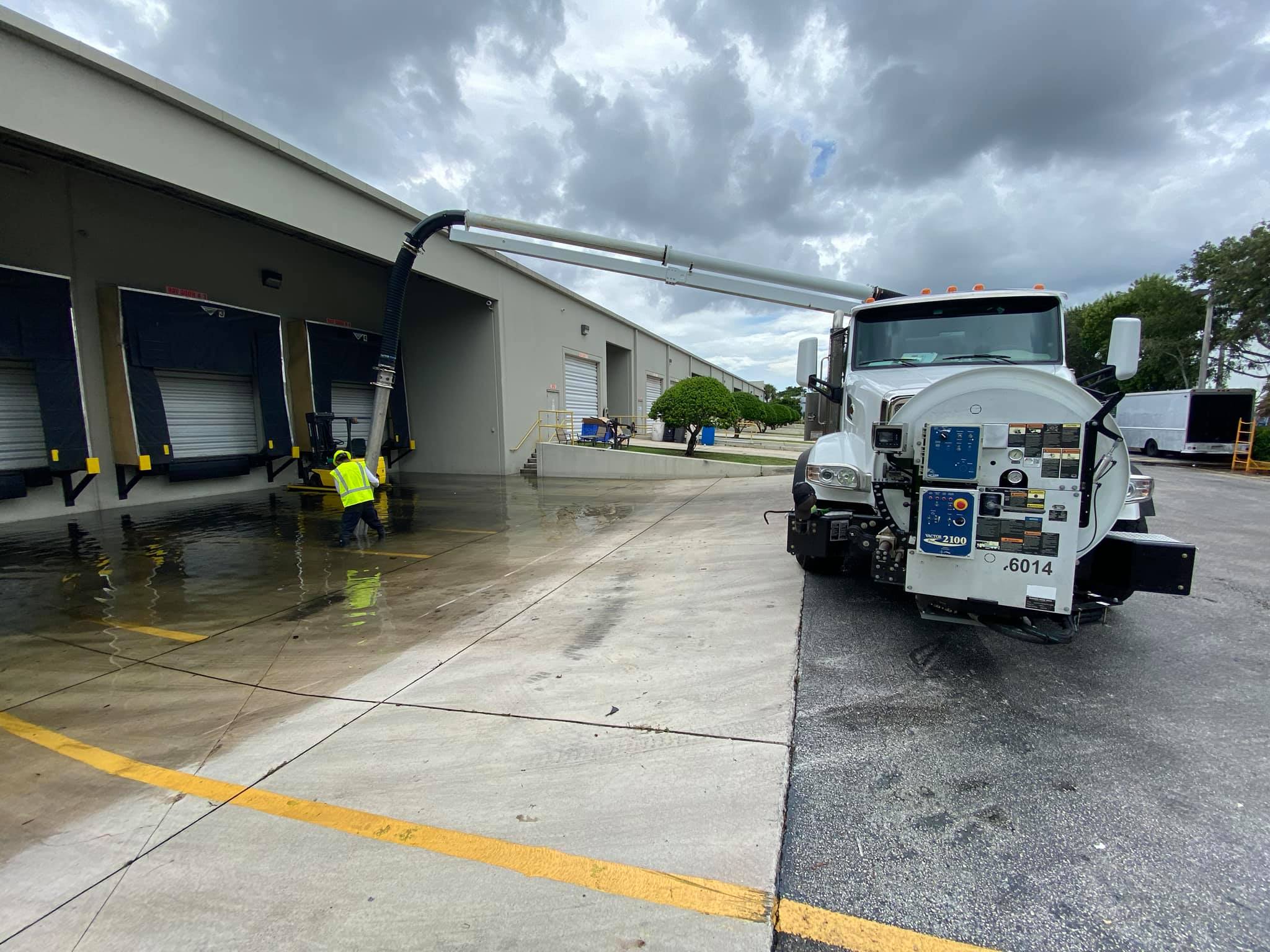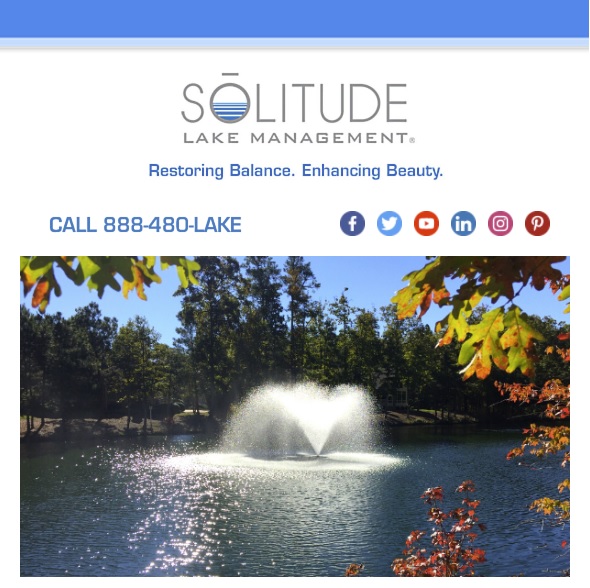The Subtle and Not-So-Subtle Differences Between Homeowners and Condominium Associations
Florida has created an abundance of legislation governing homeowners’ and condominium associations. You would think that, by now, laws affecting both types of communities would have more parity than they actually do. (Please note that that commercial condominiums are not addressed in this article.)
Perhaps the most appreciative difference between a homeowners association and a residential condominium association is that the homeowners association exists in common law, but the condominium only exists because of legislation adopted by the Florida Legislature. That said, homeowners associations are subject to Chapter 720, Florida Statutes, and condominium associations are subject to Chapter 718, Florida Statutes. There is both parity and significant differences between these two Acts, the latter of which are further addressed below. We begin by examining bidding.
Bidding: A homeowners association is only required to obtain bids if the aggregate cost of the project (referring to the materials, work, and/or services) exceeds 10 percent of the total budget including reserves, if any. On the other hand, condominium associations are required to obtain bids if the aggregate cost of the project exceeds 5 percent of the total budget including reserves, if any. Please note, there is no requirement in the legislation for a community association to obtain a definitive number of a bids. Therefore, at least two would be appropriate. Also remember, there are exceptions to the bidding requirement for professional services such as attorneys, accountants, and landscape architects.
Certified Written Inquiry: A condominium association owner has the right to send a certified written inquiry to the board, and the board is obligated to answer it within 30 days (or 60 days if the certified written inquiry is provided to the community association’s lawyer to respond to). A failure to respond means that if the owner files a legal action over the item for which certified written inquiry was provided and loses, the owner will not be responsible to pay for the association’s prevailing party attorneys’ fees. There is no similar provision for a homeowners association.
Common Areas: Common areas in a homeowners association are owned by the association itself. In other words, no owner can claim an ownership interest in a homeowner association’s common areas. However, as to condominiums, the equivalent of the homeowner association’s common area is referred to as “common elements”. All of the unit owners of the condominium association own an indivisible interest in the common elements.
Disputes: In a homeowners association, disputes between an association and a parcel owner regarding use of or changes to the parcel or the common areas and other covenant enforcement disputes, disputes regarding amendments to the association documents, disputes regarding meetings of the board and committees appointed by the board, membership meetings not including election meetings, and access to the official records of the association must be the subject of a demand for pre-suit mediation served by an aggrieved party before the dispute is filed in the local court. Before a homeowners association can commence litigation where the amount in controversy is in excess of $100,000, the approval of a majority of a quorum of the membership is required. There is no similar provision as applied to condominium associations.
In a condominium association, prior to the institution of court litigation, a party to a “dispute” (as such term is hereinafter defined) must petition the Division of Florida Condominiums, Timeshares, and Mobile Homes of the Department of Business and Professional Regulation for non-binding arbitration or, as of July 1, 2021, avail themselves of the presuit mediation process as set out in Chapter 720. “Disputes” subject to mandatory arbitration or presuit mediation include 1) the authority of the board of directors, under this chapter or association document to: i) require any owner to take any action, or not to take any action, involving that owner’s unit or the appurtenances thereto ii) alter or add to a common area or element; or 2) the failure of a governing body, when required by this chapter or an association document, to: i) properly conduct elections ii) give adequate notice of meetings or other actions iii) properly conduct meetings iv) allow inspection of books and records; and 3) a plan of termination pursuant to §718.117, Fla. Stat.
Elections: Elections in a homeowners association take place as per the bylaws, while elections for condominiums take place following the regime set out in chapter 718, Florida Statutes, more specifically §718.112, Fla. Stat., and the provisions of the Florida Administrative Code. In order to hold a homeowners association election, a quorum must be attained unless the bylaws provide otherwise. No quorum is required to hold a condominium election, but rather 20 percent of the eligible voters need to cast a ballot in order to hold the election. In a condominium association of more than 10 units, co-owners of a unit cannot serve on the board at the same time unless there are not enough candidates, or they own more than one unit. Commencing July 1, 2018, condominium association board members cannot serve more than eight consecutive years absent certain exceptions (note, this statute is not retroactive in its application). There is no similar co-owner prohibition and term limit restriction for homeowners associations.
Elections by acclimation: In a condominium association if the same number of candidates, or less, run for the board as the number of seats available, then there is no need to have the election. This is referred to as an “election by acclimation” which means, those candidates will comprise the present board upon the annual meeting. If the election is contested because there are more candidates than seats available and at least 20 percent of the eligible voters do not cast a ballot, then last year’s board rolls over.
As to homeowners associations, if the election process allows candidates to be nominated in advance of the meeting, the association is not required to allow nominations at the meeting. An election is not required unless more candidates are nominated than vacancies exist. If an election is not required because there are either an equal number or fewer qualified candidates than vacancies exist, and if nominations from the floor are not required pursuant to the statute or the bylaws and write-in nominations are not permitted, then the candidates who nominated themselves in advance shall commence service on the board of directors regardless of whether a quorum is attained at the annual meeting. Otherwise, if those conditions are not met and a quorum is not attained for a homeowners association’s election, then last year’s board rolls over to this year’s board.
Elections, Voting: Unless otherwise set out in the bylaws, homeowners association members vote in the election for the board by proxy and/or ballot. On the other hand, condominium association owners cannot vote for the election of directors by proxy but rather must vote themselves by secret absentee ballot using the the inner and outer envelope system. A homeowners association only needs to use the inner and outer envelope system when the bylaws call for secret absentee ballots.
Fines: A condominium association cannot levy a fine greater than $1,000 for any one violation and cannot lien and foreclose the fine under any circumstances. In a homeowners association, an association can foreclose to collect a fine if both i) the fine is $1,000 or more and ii) the authority to lien is set out in the declaration.
Frequently Asked Questions and Answers Sheet: As to condominium associations §718.504, Fla. Stat., requires that a “Frequently Asked Questions and Answers” sheet be made available to prospective purchasers and to owners who request it. It must be updated annually and must include the following questions along with the answers to these questions: 1) What are my voting rights in the condominium association? 2) What restrictions exist in the condominium documents on my right to use my unit? 3) How much are my assessments to the condominium association for my unit type, and when are they due? 4) Do I have to be a member in any other association? If so, what is the name of the association and what are my voting rights in this association? Also, how much are my assessments? 5) Am I required to pay rent or land use fees for recreational or other commonly used facilities? If so, how much am I obligated to pay annually? 6) Is the condominium association or any other mandatory membership association involved in any court cases in which it may face liability in excess of $100,000? If so, identify each such case. There is no similar provision or requirement for homeowners associations.
Leasing Restrictions: Effective July 1, 2021 as to HOA leasing restrictions, any restriction that prohibits or regulates rental agreements applies only to (i) an owner who acquires title to a parcel after the effective date of the governing document or amendment, or (ii) an owner who consents, individually or through a representative, to the governing document or amendment. As to condominium associations, according to §718.110(13), Fla. Stat., an amendment prohibiting unit owners from renting their units or altering the duration of the rental term or specifying or limiting the number of times unit owners are entitled to rent their units during a specified period, applies only to unit owners who consent to the amendment and unit owners who acquire title to their units after the effective date of the amendment.
Liens and Foreclosures: In a homeowners association, prior to recording a lien against a delinquent owner’s lot, the owner must be provided a statutorily compliant warning letter at least 45 days prior to recording the lien, warning the homeowner that if the assessment is not paid a lien may be recorded. Then, the owner must be provided a second letter at least 45 days prior to filing the foreclosure lawsuit warning that if the lien is not satisfied (paid-off), then a lawsuit to foreclose the lien may be filed anytime thereafter. For a condominium association the warning/waiting periods for both letters was 30 days. Effective July 1, 2021 this was changed to 45 days.
Material Alterations: Unless otherwise provided in the declaration of covenants and restrictions, a material alteration to a homeowners association’s common area is decided by the board. In condominium associations, material alterations require 75 percent approval of all unit owners unless the declaration provides otherwise.
Official Records Requests: In a homeowners association, official record requests must be made by certified U.S. mail to create the rebuttable presumption the association willfully failed to respond. There is no similar requirement for a condominium association. Every community association should adopt specific rules governing official records requests, how often they can be made, and where they must be delivered. If your association has not done so, you are urged to discuss this with the association‘s lawyer.
Quorums: A quorum of the membership for a homeowners association membership meeting consists of 30 percent of the entire membership unless a lower number is provided for in the bylaws. A quorum for a condominium association membership meeting occurs when there is a majority of the voting interests present unless a lower number is provided for in the bylaws.
Reserve Accounts: A homeowners association only has restricted reserve accounts if initially created by the developer or voted on and approved by a majority of the entire membership. In a condominium association, the budget must include reserve accounts for capital expenditures and deferred maintenance. These accounts must include, but are not limited to, roof replacement, building painting, and pavement resurfacing, regardless of the amount of deferred maintenance expense or replacement cost, and any other item that has a deferred maintenance expense or replacement cost that exceeds $10,000. Condominium boards and homeowners association boards with restricted reserves may propose lower or no reserves to the membership which is subject to approval by a majority of a quorum of the members. However, neither board is obligated to propose lower reserves. A condominium association board and a homeowners association board with restricted reserves must fully fund those reserves in the budget each year as must homeowners association boards whose association has adopted restricted reserves.
Transfer Fees: As per §689.28, Fla. Stat., transfer fees when buying and leasing a home in the state of Florida are prohibited. But, there are exceptions for both homeowners and condominium associations with this caveat. There is no cap, per se, that a homeowners association can charge a prospective member as a part of acquiring their property, but such fee must be authorized in the declaration (or other recorded document). However, as per §718.112 Fla. Stat., a condominium association can only charge up to $150 per applicant. A husband/wife or parent/dependent child are considered one applicant. A condominium association can only charge a transfer fee if it has the authority to approve transfers, and the authority for the transfer fee, specifically, must be set out in the declaration or bylaws (and as set forth above, as of July 1, 2021 it is presently limited to a maximum $150.00).
Warranties: A developer and general contractor of a condominium provides statutory warranties to buyers of units as further detailed in Chapter 718, Fla. Stat. There are no similar statutory warranties set out in Chapter 720, Fla. Stat., for buyers of a home within a homeowners association. A developer of a condominium, pursuant to relevant law, also provides an implied warranty of habitability. As to a homeowners association, §553.835, Fla. Stat., provides in relevant part that there is no such warranty for off-site improvements (i.e., the common areas) with a small exception for the shared components of a townhome type community.
Websites: A condominium association that has a condominium with 150 or more units must host an association website and post certain official records to it. Homeowners associations have no similar requirement.
If you have any questions in regard to these matters be sure to discuss them with an attorney of your choosing.
(Reprinted with permission from the April 2021 edition of the Florida Community Association Journal and updated to reflect recent legislation effective July 1, 2021)
Tags:
Condo and HOA,
Condo and HOA Laws,
Management News





